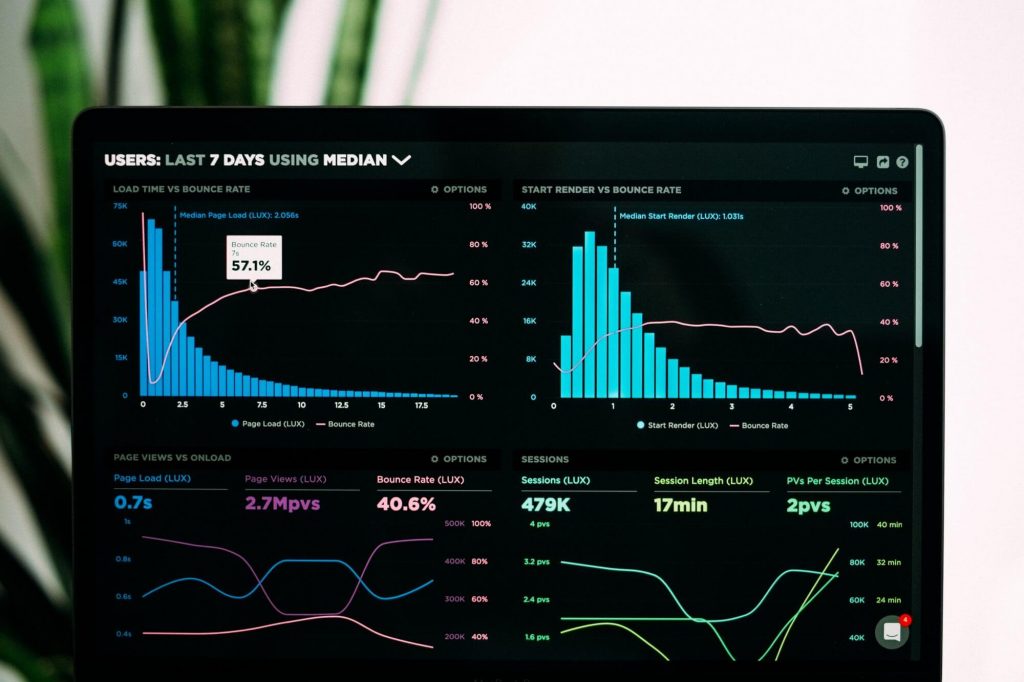Whether it’s a website, an app, a PPC campaign or any other form of digital marketing activity, monitoring the right performance metrics will help you save time and most importantly, achieve your business goals. For those people that are less experienced with Google analytics, the interface can often be a little daunting due to the level of data and number of reports available. However, once your KPIs are set and it’s clear which reports provide you with the valuable insights you need then Google Analytics is the most powerful analytics tool out there.
The KPIs (key performance indicators) you set may vary depending on the purpose of your website. For example, an e-commerce website may have a totally different set of goals to a brochure website. However, there are some basic metrics that build a simple overview of performance generally. So, here are five key metrics that every digital marketer should grow accustomed to within their day to day review of performance.

Average Session Duration
Average session duration tells us on average, how much time people are spending on your website/pages. At a top-level, this helps you identify the type of content users are interested in and can help inform your content strategy to produce similar types of engaging content that are received well. It can also on some occasions help you identify which traffic channels are most engaged. For example, if the traffic coming from your email marketing activity had a very low average session duration then this may indicate that there was an issue with the quality of targeting and personalisation.
New and Returning Users
In simple terms, Google Analytics categorises a new user as someone who has never visited your website before and returning users as someone who has previously visited your website. However, it’s not quite as straightforward as that as Google currently uses cookies to determine which category a user falls in. If a user has visited your website before but then deletes their browser cookies and visits the website again, they would be recorded as a new user, even though they have visited the website before. So, rather using the exact numbers from this data it is more beneficial to monitor the trend of this data. If the majority of your users are returning users then this suggests that your website provides engaging content. Alternatively, if your website visits are primarily made up of new users then this suggests that your marketing efforts to drive new traffic are working a treat.
Bounce Rate
Let’s start with the basics, what is bounce rate? Bounce rate is the percentage of users who land on a page on your website but didn’t proceed to view at least one additional page. Another common question people tend to ask is ‘what is a good bounce rate? As a rule of thumb if your bounce rate is between 40 – 60% then you probably don’t have too much to worry about. However, it is worth noting that there are a number of elements that could impact this, for example, the industry, the channels and the devices people are using could have a significant impact on this.
Conversion Rate
Conversion rate is the percentage of users who have completed a specific action on your website. From an e-commerce perspective, this would be the successful completion of a purchase, however, for non e-commerce websites, this may include things such as:
- Successful submission of a contact form
- Email newsletter sign up
- Download
- Video plays

PageSpeed
When it comes to KPIs, pagespeed is probably one that is less common compared to the others we’ve already mentioned. However, it’s just as important and should not be neglected. Not only does a slow loading website provide a frustrating user experience but it also has a negative impact on your SEO. You should always keep an eye on how long your website takes to load as the performance can change frequently when you add and adapt your content. PageSpeed Insights by Google is a great tool for you to utilise, as it highlights and suggests where potential improvements can be made to improve your website page speed.
 By
Jamie McPhee
By
Jamie McPhee